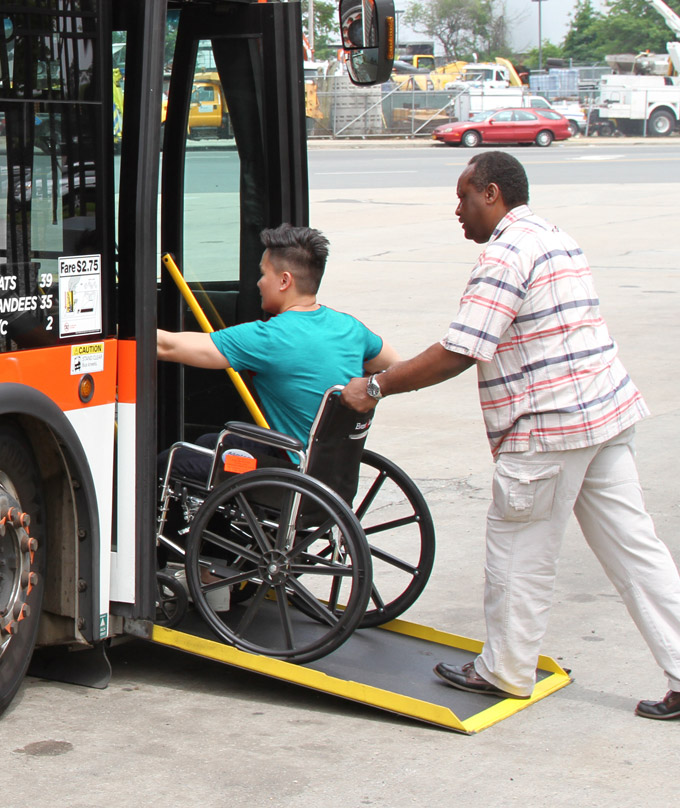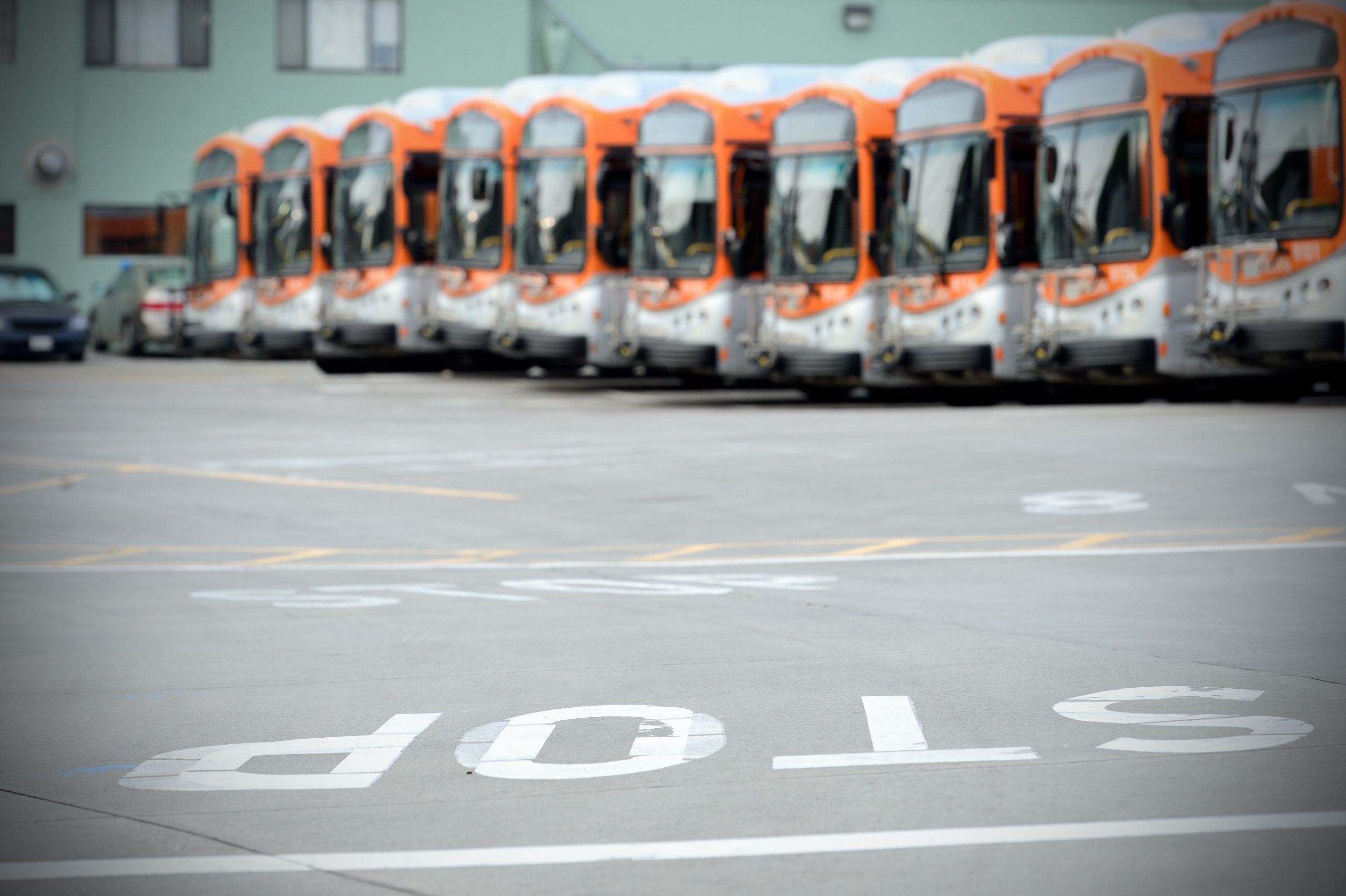The decision to invest in new bus builds brings with it a whole host of questions: What kind of propulsion system do you need? How many passengers do your buses need to accommodate? Does an articulated bus make sense in your community?
Inevitably, one of the questions that transit agencies must tackle is whether to migrate their existing ITS technology from their old buses to their new buses, or have new equipment provided as part of the bus build. This choice can have big implications for your passengers, operations, and budget going forward.
So which approach is right for you? The truth is, it depends.
At Clever Devices, we’ve helped hundreds of transit agencies navigate this decision as tens of thousands of new buses were built. Along the way, we’ve advised some agencies to stick with their existing Intelligent Vehicle Network (IVN) computer, and others to start fresh with the latest system.
Let’s explore the benefits — and some drawbacks — of both approaches, as well as the factors you should consider for your fleet.
The Case For Migrating Existing ITS
New bus builds can be an exceedingly expensive endeavor, with costs ranging from$350,000 to $750,000, per bus. For agencies — especially those with small- and mid-sized fixed-route fleets — the chance to trim these costs, even by a few dollars per bus, can be very appealing. One way to generate some savings is to take ITS equipment from buses slated for retirement and reuse it on new buses.
However, these initial savings may yield unexpected long-term costs, in regards to both flexibility and finances. Here’s why:
Technology — and how it is used — is constantly evolving: Chances are, you aren’t carrying a flip phone, your MP3 player hasn’t seen the light of day in several years, and that big CRT TV of yours has been replaced by a flat panel SmartTV. It’s not just because these technologies are old; it’s because they are irrelevant. They simply can’t interface with new technologies, and they don’t provide many of the basic functions that new technology offers.
While bus technology doesn’t evolve quite as rapidly as consumer technology, it’s not that far behind. Think about it: five years ago, things like high-definition on-board digital signage, IP-based voice communications, text-to-speech announcements, and real-time disruption management tools were foreign concepts for agencies; today, they are nearly ubiquitous. Unfortunately, some older ITS systems can’t integrate with these new offerings — and they certainly won’t be able to handle new innovations on the horizon. As a result, migrating older ITS can put artificial constraints on your brand new buses, handicapping them before they even pick up their first passengers.
Repair expenses can creep up: Like with any piece of technology, as ITS ages, it becomes more expensive to maintain. Parts become harder to come by, and the costs to acquire those parts go up. In the end, the expense of maintaining older equipment may wipe out the savings garnered in the first place.
The Case For New ITS
At Clever Devices, we build our IVNs to last 10-15 years — well beyond the lifetime of most technologies. In fact, some of our early IVN models are still in use after more than two decades. Clearly, we believe that technology should be built to last. However, there comes a point where it needs to evolve.
That point, naturally, will vary from bus to bus and from agency to agency. However, if your ITS is more than 10 years old, or two-or-more generations behind the current version, it’s probably not worth moving onto your new vehicles. That’s because utilizing new technology offers a host of benefits, including:
Newer operating systems: Just like your laptop or desktop, ITS runs on an underlying operating system (OS). And just like your computer’s OS, as the ITS OS ages, its ability to handle new tasks and programs becomes more limited. In addition, the companies that develop these operating systems (our IVNs run on Microsoft Windows, for example), only support their OS products for so long. Once the developer stops producing updates for these operating systems, they run the risk of obsolescence. On the flip side, however, starting with a newer ITS ensures that your technology will be supported for the lifetime of your new bus.
Additionally, with the increase of IoT integration, you’re likely putting an increasing amount of data into the cloud. While IoT adoption offers tremendous benefits, it also carries tremendous risks, namely data breaches and privacy violations. Older ITS technology, running on older operating systems, were not built with IoT security in mind potentially exposing your data to exposure.
Greater connectivity: Though a lot of data is transmitted wirelessly to the cloud, there is also a significant amount of data that is being communicated within the bus itself. This requires different systems — cameras, fare systems, passenger counting, signage, and others — to be connected and integrated. In the past, this connectivity was made via technology that was proprietary to the transit industry, or even to individual bus OEMs. Now, however, that connectivity is being driven by standard protocols, such as HDMI and Ethernet. New ITS can take advantage of this connectivity, whereas older technology will be inhibited by it.
Support for technology: No need to move your audio tapes to your new car; the last one with a cassette player shipped in 2010. In much the same way, transit technology has evolved past older onboard interfaces and computing hardware. Modern systems require faster data transmission and processing which often cannot be sustained by legacy onboard communication interfaces. In a similar vein, the vast amount of data being generated on a transit bus needs a commensurate computing platform to handle the virtual firehose of information. Data-rich applications such as turn-by-turn navigation and infotainment demand more processing power, RAM, and drive space than older platforms can deliver.
Enhanced flexibility and ROI: With greater connectivity comes greater flexibility — for your buses, and for your agency overall. You can leverage off-the-shelf, plug-and-play solutions and tools that can enhance the functionality of your ITS and help you generate a greater return for your investment.
Let’s Talk About Your Needs
Are you investing in new buses? Is your ITS technology starting to show its age? Let’s chat and figure out the best approach for your agency.
Add a new section that deals with support for new offerings. As an example, older versions of bus equipment don’t have sufficient processing power, memory, or storage to take advantage of some of our latest innovations. Such as on-board maps, text to speech engines, content/video players, etc.



